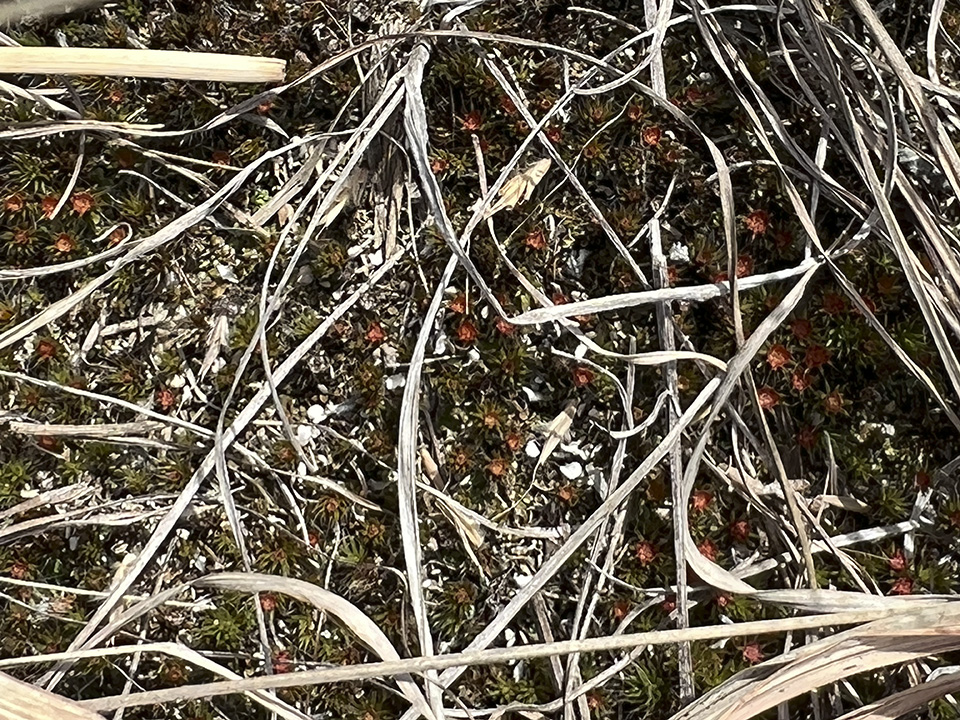
Juniper haircap moss (Polytrichum juniperinum) is a common and widespread moss with a worldwide distribution, occurring on every continent including Antarctica. In North America it has been recorded in every Canadian province and in every U.S. state except Texas, Louisiana, and Florida. It is common in Minnesota. It is found in a wide variety of habitats, including upland open woodlands, savannas, sand prairies, roadsides, trail sides, rocky ledges, and creek banks. It sometimes colonizes forest openings following a fire or a blowdown. It grows under full sun to light shade, in dry conditions, on acidic, gravelly or sandy soil, or on thin soil over rock. It usually forms loose to moderately dense colonies, and often forms extensive patches.
Juniper haircap moss stems are densely leafy. The leaves are narrow, stiff, and sharply pointed. They resemble juniper leaves. This is the feature that gives the species its common name. When moist, they are flat and they spread straight out in all directions from the stem. When dry, they fold upward against the stem. Male plants develop a flower-like, yellowish to reddish “splash cup”, allowing sperm to be dispersed by rain drops. The fertilized female plant produces a sharply rectangular capsule at the end of a long yellowish to reddish stalk. At maturity, the spores are dispersed by wind.
http://www.minnesotaseasons.com/Plants/juniper_haircap_moss.html
